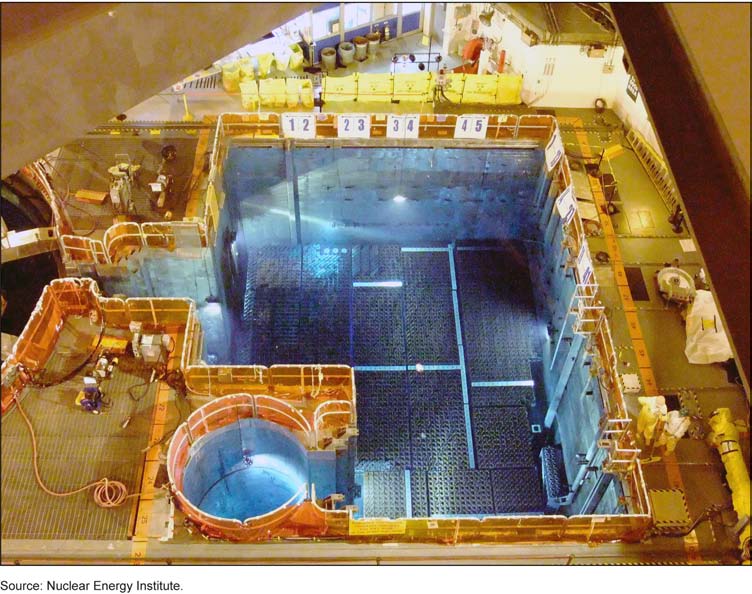Nuclear Waste Q&A
-
What is “spent fuel” and where is it stored?
Spent fuel is highly radioactive fuel assemblies removed from the reactor core.
Spent fuel is stored on-site in the United States- every nuclear plant is a high-level radioactive waste dump. There are approximately 600 metric tonnes of spent fuel at Seabrook Station.
After their removal from the reactor core, spent fuel is stored primarily in one of two ways:
In pressurized water reactors, the spent fuel is placed in 40-45 foot water-filled concrete pits adjacent to the reactor containment structures (e.g. Seabrook).
In boiling water reactors, the spent fuel pools are located above ground in the building surrounding the primary reactor containment structure (e.g. Fukushima Daiichi)
Water storage is required as spent fuel rods continue to emit considerable amounts of both heat and radiation for many years.
-
What is the potential risk of spent fuel?
Without cooling, the fuel pool water will heat up and boil. If the water boils or drains away, the spent fuel assemblies will overheat and either melt or catch on fire.
Spent fuel pools contain more highly radioactive fuel than reactor cores. On a limited basis, when the spent fuel pools are full and have cooled sufficiently, the spent fuel could be moved to concrete casks. Spent fuel is, therefore, a softer target than the reactor core.
Risk factors to spent fuel include loss of water, loss of electricity, fire, dense packing, natural disasters (tornadoes, hurricanes, earthquakes, ice storms, drought, etc.), human error, and terrorism.
-
What is dry cask storage? Is it safer? How often is it used?
Dry casks typically consist of a sealed metal cylinder containing the spent fuel enclosed within a metal or concrete outer shell. Casks are stored vertically or horizontally on concrete pads. The U.S. Nuclear Regulatory Commission (NRC) reviews the designs for spent fuel dry storage systems.
Cask storage is generally considered safer than fuel pools. Fuel must be cooled for at least 5 years (and closer to 10 years for plants that use a higher uranium mix) before the spent fuel rods can be loaded into casks. Per the NRC, many reactor spent fuel pools are reaching capacity.
At many reactors, when the number of spent fuel assemblies has reached pool capacity, the NRC still does not require the industry to move them out of the pools.
Post 9/11, it was determined that in a pool fire event or with the loss of power and subsequent loss of coolant from an accident or intentional sabotage, the closer the assemblies were racked, the less time operators had to prevent the spent fuel rods from exposure.
Spent fuel is a worldwide problem — tens of thousands of tons exist. According to the Nuclear Energy Institute, there were 65,193 metric tons of spent fuel stored at nuclear sites across the United States in December 2010. Of this amount, 49,620 metric tons resided in spent fuel pools, while 15,573 metric tons had been transferred to dry cask storage.
By comparison, the reactor core of a large nuclear power reactor contains around 200 metric tons of irradiated fuel. The U.S. nuclear industry generates 2000-2300 metric tons of used fuel per year.
Plants argue that cask storage is more expensive, takes more downtime to accomplish, and is therefore too expensive for their ratepayers.


